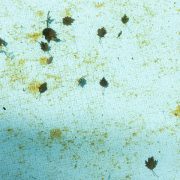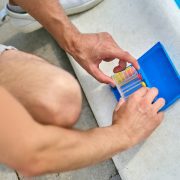
Identifying and Removing Pool Stains: A Comprehensive Guide
Keep Your Pool Surface Sparkling Clean with Effective Stain Identification and Removal Techniques
Introduction
Pool stains can be an eyesore and may affect the overall aesthetics of your swimming pool. They can be caused by various factors such as metals, organic materials, and improper water chemistry. To keep your pool looking its best, it’s essential to identify the type of stain and use the appropriate products and methods to remove it. In this article, we’ll discuss the common causes of pool stains, how to identify them, and the most effective solutions to eliminate them.
Common Causes of Pool Stains
- Metals: Metals like iron, copper, and manganese can cause unsightly stains on your pool surfaces. These metals can be introduced through source water, corroding pool equipment, or certain chemicals.
- Organic Materials: Organic stains result from materials like leaves, algae, and other plant debris that settle on the pool surface, causing discoloration.
- Calcium Deposits: High levels of calcium hardness in your pool water can lead to calcium deposits on your pool surface, also known as scaling.
- Improper Water Chemistry: Unbalanced pool water chemistry can cause various types of stains, including metal stains and calcium deposits.
Identifying Pool Stains
- Metal Stains: Metal stains are typically caused by iron, copper, or manganese. Iron stains tend to be reddish-brown, while copper stains are usually green, blue, or teal. Manganese stains may appear as dark brown or black spots.
- Organic Stains: Organic stains are usually brown, green, or dark in color and often have irregular shapes. They can be caused by leaves, algae, or other plant debris.
- Calcium Deposits: Calcium deposits appear as white, gray, or chalky areas on the pool surface, usually in areas with high water circulation.
Removing Pool Stains
- Metal Stains: To remove metal stains, use a metal sequestrant to bind and remove metals from the water. Follow the product’s instructions and ensure that your pool water chemistry is balanced. For stubborn stains, you may need to use a stain remover product specifically formulated for metal stains.
- Organic Stains: For organic stains, start by manually removing any visible debris and brushing the pool surface. Shock your pool with a high dose of chlorine to eliminate any organic material. For persistent stains, consider using an enzyme-based pool stain remover that can break down organic materials.
- Calcium Deposits: To remove calcium deposits, adjust your pool water chemistry, lowering the calcium hardness and pH levels. You can use a calcium deposit remover or a pumice stone to scrub away deposits gently. Be cautious not to damage the pool surface while scrubbing.
Preventing Pool Stains
- Maintain Balanced Water Chemistry: Regularly test and adjust your pool water chemistry to prevent staining caused by metals, calcium deposits, or imbalanced water conditions.
- Use a Metal Sequestrant: If you have metals in your source water, use a metal sequestrant to prevent staining.
- Clean Your Pool Regularly: Regularly skim, vacuum, and brush your pool to remove debris and organic materials that can cause staining.
- Cover Your Pool: Use a pool cover to minimize the introduction of debris and organic materials, which can cause stains.
Conclusion
Identifying and removing pool stains requires understanding the cause of the stain and using the appropriate products and methods for effective removal. By maintaining balanced pool water chemistry, using a metal sequestrant when necessary, and regularly cleaning your pool, you can keep your pool surface stain-free and looking its best.




